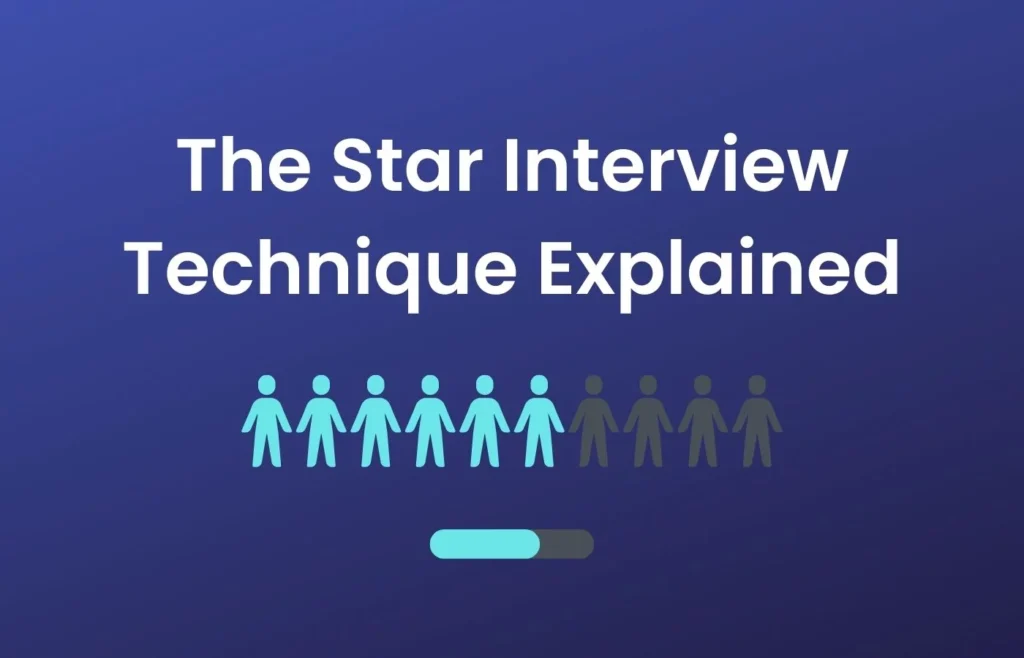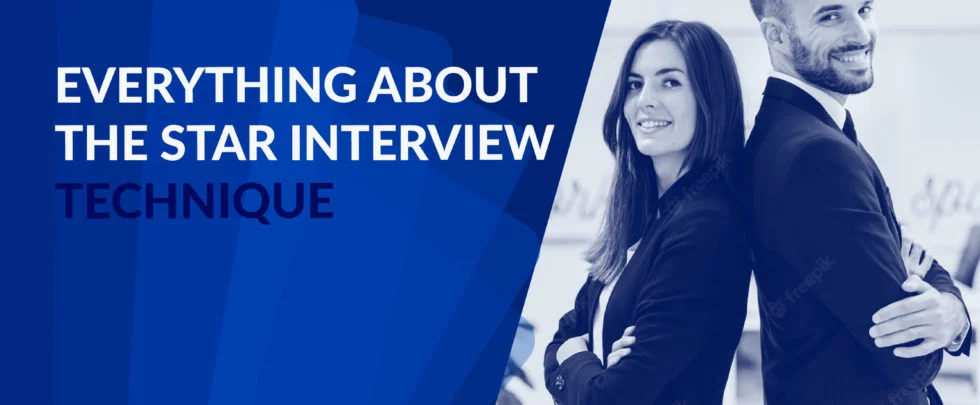If you are currently prepping for a job interview, then you most likely know how important it is to make a good impression. From the way you dress to the words that come out of your mouth, everything matters!
Fortunately, there is a surefire way to answer job interview questions and make an outstanding impression on hiring managers: the STAR interview questions answering technique.
The “STAR” in the “STAR interview technique” stands for Situation, Task, Action, and Result. It’s synonymous with Amazon interviews, but nowadays more and more companies rely on the STAR interview technique for their interviews.
This four-step process helps candidates to create structured responses by organizing their thoughts into easily accessible & well-structured bits.
In this article, we will discuss the basics of the STAR interview technique and then go over kksome tips and strategies for mastering it when it comes to answering Amazon Interview Questions, as well as common interview questions.
Do you have an interview with Amazon?
Pro Tip
Make sure to check out our top-selling Amazon Interview Guide which comes with a full refund guarantee in case you fail your interviews.

Table of Contents
The Star Interview Technique Explained

Now let’s get to the important part, what is the STAR interview technique, to begin with?
Well, the STAR interview technique is a great way to structure your answers to behavioral interview questions. It stands for Situation, Task, Action, and Result. This four-step process helps you organize your thoughts into easily-accessible categories and offers real-world examples of your experience.
Situation
The first step is the “Situation”, which is where you explain the context of the story or situation you are about to discuss. It requires a clearly laid out structure, and keep in mind that you must use real-life examples or situations you have been through:
Context is Key
Briefly describe the situation you’re about to discuss. This could be a work-related project, a volunteer experience, or even a personal challenge you faced. Provide enough detail for the interviewer to understand the environment and circumstances you were operating in.
Specificity Matters
Avoid vague statements. Instead, be specific about the context. Who were you working with? What was the overall goal or objective? What challenges were you facing?
Quantify if Possible
While not always possible, incorporating quantifiable details can strengthen your “Situation” description. For example, if you were tasked with streamlining a process, mention the size of the team or the volume of work involved.
Set the Stage for Action
The “Situation” should pave the way for the “Task” you were assigned or the responsibility you took within that context. Essentially, you’re setting the stage for your actions and how you responded to the situation.
Task
The Task portion of this method is the second step, in which you explain what was expected of you in the situation. This could include any tasks or goals that were assigned to you, as well as any challenges or obstacles that had to be overcome.
The “Task” element of the STAR method acts as a bridge between the context you set in the “Situation” and the actions you detail later. Here’s how to effectively communicate the specific task or responsibility you faced within the scenario you described:
Identify Your Role
Clearly define your role and responsibility within the situation presented in the “Situation” section. What were you tasked with achieving? What specific objective were you expected to fulfill?
Focus on Your Contribution
Even if you were part of a team effort, emphasize your individual responsibility within the larger context. What was your specific area of focus or contribution?
Align with the Job Description
Whenever possible, try to connect the “Task” to the skills and experience highlighted in the job description. This demonstrates how your past experiences have equipped you to handle similar tasks in the role you’re applying for.
Quantify Expectations (if applicable)
In certain situations, you might be able to quantify the expectations associated with the task. For example, if you were tasked with improving customer satisfaction ratings, mention the specific target or desired outcome.
Action
The “Action” portion of the STAR interview technique is where you truly shine.
Here, you get to showcase the specific steps you took in response to the situation and task you described earlier. This is your opportunity to demonstrate your problem-solving skills, initiative, and ability to navigate challenges.
This could include any strategies, techniques, or processes that you used to complete the task. Perhaps you can show some conflict resolution skills, every detail in this context matters! Here are some key points to remember when crafting the “Action” section of your STAR response:
Focus on Specific Actions
Don’t simply state what you did; elaborate on the specific actions you took. This could involve communication strategies, problem-solving approaches, initiative you demonstrated, or decisions you made.
Highlight Relevant Skills
As you describe your actions, ensure you’re showcasing the key skills and experiences relevant to the job you’re applying for. This could be communication skills, leadership qualities, technical expertise, or analytical thinking.
Be Clear and Concise
While providing details, avoid rambling. Structure your actions chronologically, highlighting the most impactful steps you took.
Result
Finally, the Result portion of the STAR interview technique explains what happened as a result of your actions. This could include any successes, improvements, or lessons learned that came out of the situation. Here, you get to solidify the impact you made and leave a lasting impression on the interviewer. Here are some tips for structuring your Results:
Focus on Positive Outcomes
The “Result” section should emphasize the positive outcome or achievement resulting from the actions you described earlier. This could be a quantifiable improvement, a problem solved, a satisfied customer, or a new skill learned.
Quantify Whenever Possible
Use numbers and data to showcase the impact of your actions. Did your solution increase sales by X%? Did your leadership lead to a Y% improvement in team efficiency? Quantifiable results paint a clear picture of your value.
Connect Back to the Task
Ensure the results you describe directly connect back to the task you outlined earlier. Demonstrate how your actions effectively addressed the initial challenge or objective.
Highlight Transferable Skills
While showcasing the results, emphasize the transferable skills you utilized to achieve them. This could be communication skills, leadership qualities, or problem-solving abilities – all valuable assets in any work environment.
As you see, the STAR interview technique is a great way to structure your answers to job interview questions. It helps you organize your thoughts into easily accessible categories and helps you structure real-world examples of your experience.
With this method, you can make an outstanding impression on hiring managers and show them that you are the right candidate for the job!
The Best Tips and Strategies for Conquering the STAR Interview Technique

Now that we’ve gone over the basics of this, let’s take a look at some tips and strategies for mastering the STAR technique when it comes to answering common interview questions.
The first tip is to practice, practice, practice! The more you practice using this method in your interviews, the better you will become at it.
Practise writing down your own answers to common interview questions before your interview so that you can get a feel for how it works. Especially studying the behavioral interview questions will be very beneficial.
Another tip is to be specific when you are describing your situation, task, action, and result.
The more specific you can be, the better. Make sure you mention concrete examples and remember to mention all the necessary technical details.
Also, make sure that you are using compelling examples when you are describing your situation and tasks. This will help you demonstrate your experience in a tangible way and will make it easier for the interviewer to understand what you have done in the past.
Last but not least, make sure that you are focusing on the results of your actions. This is one of the most important aspects of the STAR interview technique and it will help you demonstrate how your experience has been beneficial in the past.
Once you have mastered the STAR interview method, it is important to remember that it is only one tool in your arsenal.
You should also practice other techniques such as storytelling and using body language to help you stand out during an interview.
In addition to that, make sure that you are prepared for any tough questions that may come up during the interview.
Another bonus tip here is researching the company and having a good understanding of what the role entails can help you answer any questions that may come up, so go beyond what is mentioned in the job description if you want to stand out.
The Benefits of Using the STAR Interview Technique
As we described above, the STAR interview technique is a great way to structure your answers during an interview and can help you stand out from the competition during your interview preparation.
By using this method, you are able to provide concrete examples of your experience and demonstrate your problem-solving skills and how it has been beneficial in the past.
Doing this will help you show the interviewer that you have the skills, leadership skills, and knowledge necessary for the job.
Needless to say, mastering the STAR technique can be a great way to give yourself an edge in the job interview process.
All you have to do is follow these tips and strategies we have in this article and implement them in your interviews. This way, you can be sure that you are presenting yourself in the best possible light.
When you combine these methods, you can create a more compelling story about your experience and make it easier for the interviewer to understand what you have done in the past.
How Can The Star Interview Technique Be Applied to Questions?
The STAR interview technique can be used to answer behavioral interview questions to show the hiring managers how you perform in various scenarios.
Behavioral questions are an important part of the ‘Star interview questions’ which companies commonly use. These questions focus on past behaviors related to the role you are interviewing for.
They are typically used as a way to gain insight into how a candidate may handle similar situations in the future. Behavioral questions prompt candidates to talk about their previous experiences, and provide evidence of how successful (or not) they were at navigating those situations.
With these types of questions, hiring managers can uncover core competencies that will help them assess whether or not the person is suited for the job and will fit into the company culture.
It is important to note that answering behavioral questions and using the STAR interview technique as an answering strategy go hand in hand.
When answering the important interview questions, you should start by describing the Situation or Task that you were faced with. This will give the interviewer an idea of what kind of experience you have had in the past.
Next, you should explain the Action that you took to address the situation or task.
Showing the interviewer that you possess the necessary expertise and understanding for the job will prove your capabilities.
Finally, you should explain the Result of your action. This will help show the interviewer that your experience has been beneficial in the past.
The STAR Method is an effective way to answer behavioral interview questions. By following the steps outlined above, you can provide the interviewer with a clear and concise explanation of your experience and how it has helped you in the past.
You might notice the article highlights a few points more than once, and the goal of that is to present how important they are. After all, repetition does wonders!
Let’s discuss some of the advantages of using the star method:
• It helps you to structure your answers in a clear and concise way.
• It allows you to provide evidence of your past successes.
• It helps the interviewer understand how you have handled similar situations in the past.
• It gives you an opportunity to showcase your skills and abilities.
• It helps you to stand out from other candidates.
The STAR Method is an effective way to answer behavioral interview questions, and it can be a great tool for job seekers.
By following the steps outlined above, you can provide the interviewer with a clear and concise explanation of your experience and how it has helped you in the past.
So next, we’ll share an example question and we’ll show how to use the STAR interview technique in your answers. This example will further help you understand what kind of information goes into each step:
Sample Question
“Describe a time when you had to work with a difficult customer.“
STAR Answer
Situation: “While working as a customer service representative at a busy retail store during the holiday season, I encountered a customer who was extremely frustrated with a delayed order. The customer was a regular who typically placed large orders, and this particular order was crucial for an upcoming event.”
Task: “Since the customer was a valued client and their order was time-sensitive, my primary task was to de-escalate the situation, identify a solution to expedite the order, and ensure the customer’s satisfaction.”
Action: “I first actively listened to the customer’s concerns, acknowledging their frustration and empathizing with their situation. I then apologized for the inconvenience and investigated the cause of the delay. Through collaboration with the warehouse team, I was able to locate the order and expedite its processing. Additionally, I offered the customer a complimentary express shipping upgrade to ensure timely delivery.”
Result: “By actively listening and demonstrating empathy, I was able to de-escalate the situation and turn a frustrated customer into a satisfied one. The customer was grateful for my efforts and expressed their appreciation for the prompt resolution. Additionally, expediting the order ensured it arrived on time for their event, preserving their trust and loyalty to our store.”
Remember, the STAR interview technique is a powerful tool to help you structure your interview responses effectively, showcasing your strengths and value proposition to potential employers.

Star Interview Technique: Final Words
So we covered most of it, right? It is another well-detailed post about the STAR Interview Technique.
The star interview technique is a great way to answer interview questions and provide a clear and concise answer that is focused on the specific question being asked.
At Interviewjoy, we help people ace their interviews by providing them with the best tips, tricks, and techniques to help them stand out from the competition.
So if you are looking to prepare for an interview, make sure to check out our top-selling interview guides for more helpful resources.
We hope you enjoy this post and found it helpful. Good luck with your interview!


